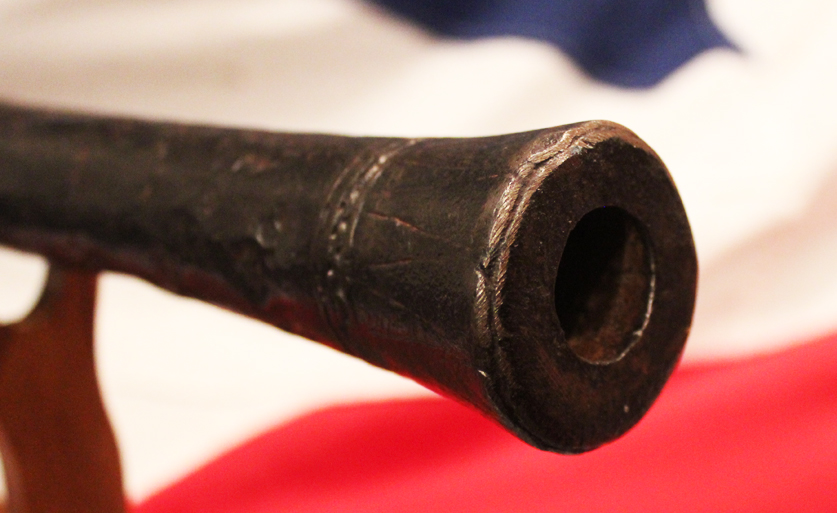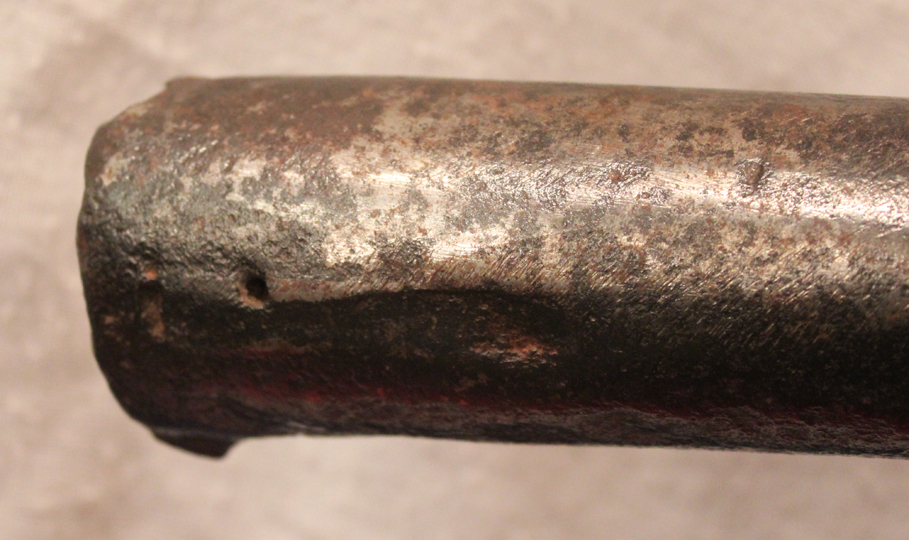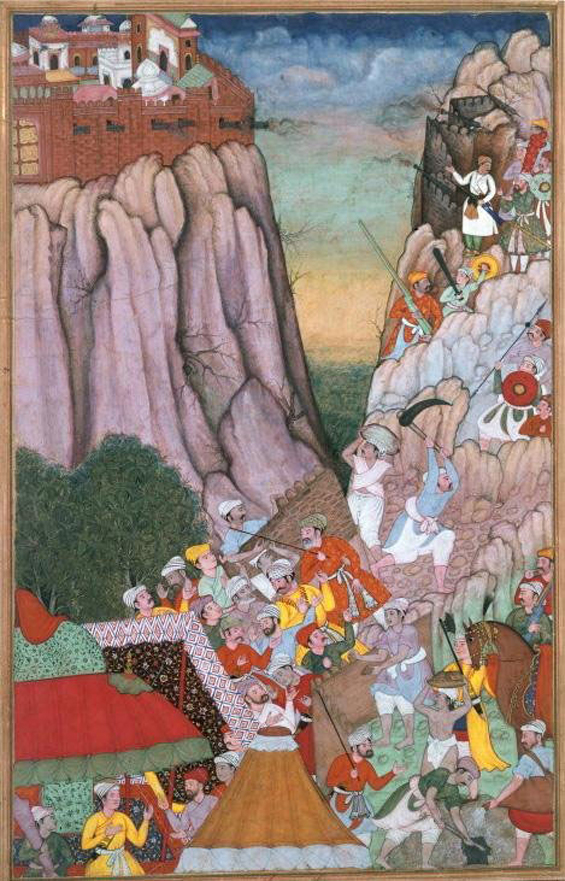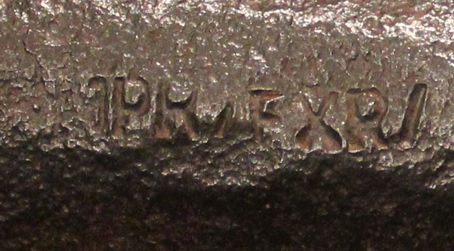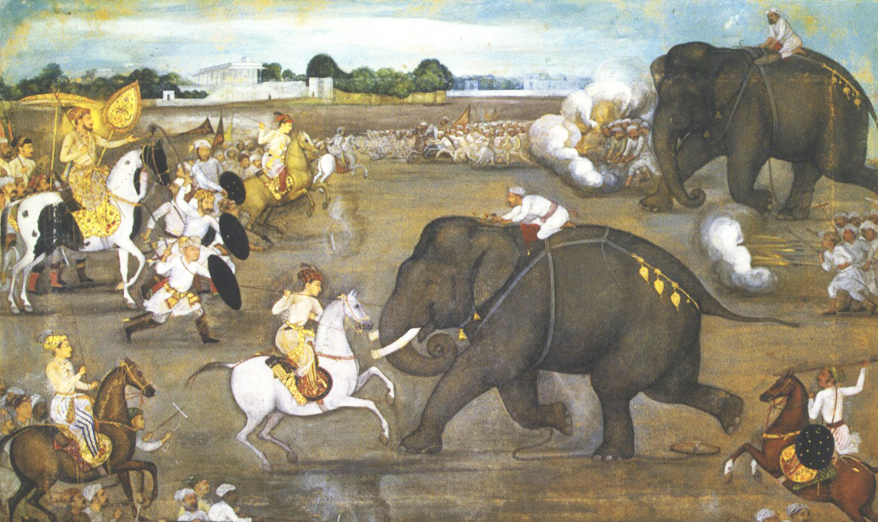A 16th C. Moghul - Hindu 'Shaturnal' Swivel Cannon Barrel For Use on Moghul War-Elephant Or War-Camel. Up To 500 Years Old. An Amazing Early War-Piece of Early Mobile Artillery Used In The Moghul Empire Of Akbar The Great
This incredible and historical war piece would have been mounted upon the Howdah, the huge wooden travelling carriage type apparatus for which the war crew would be seated, one to drive, steer and command the elephant, the others to operate cannon and arquebusses. Or, mounted upon the front of a war camel’s saddle.
A superb late Medieval matchlock swivel cannon barrel, called a shaturnal, specifically designed for combat service mounted upon the back of a great beast of war.
Only the second example of such an intriguing war-piece that we have seen in the past ten years. They are truly very scarce to find, and a great and most impressive piece of historical weaponry from late medieval India.
Interestingly the best way to see just how they were used would be in Sir Peter Jackson’s magnificent trilogy and interpretation of Tolkien’s masterpiece, Lord of the Rings. In one of the awesome battle scenes there are huge giant ‘fantasy’ war elephants, and each one bears a massive howdah for the crew to rain arrows and spears down upon the unfortunate enemy below, just as the Moghul war elephants once did in reality in India, centuries ago, but with arquebuss and light-cannon fire, instead of simply arrows or spears.
In the gallery is an engraving of War elephants depicted in Hannibal crossing the Rhône
A war elephant was an elephant that was trained and guided by humans for combat. The war elephant's main use was to charge the enemy, break their ranks, and instill terror and fear. Elephantry is a term for specific military units using elephant-mounted troops.
War elephants played a critical role in several key battles in antiquity, especially in ancient India.While seeing limited and periodic use in Ancient China, they became a permanent fixture in armies of historical kingdoms in Southeast Asia. During classical antiquity they were also used in ancient Persia and in the Mediterranean world within armies of Macedon, Hellenistic Greek states, the Roman Republic and later Empire, and Ancient Carthage in North Africa. In some regions they maintained a firm presence on the battlefield throughout the Medieval era. War-elephants were significantly used in the Battle of the Hydaspes,
The Battle of Zama, the Second Battle of Panipat
And the Battle of Ambur. At the Battle of Panipat, in 1556, the Hindu ruler King Hemu had a force of 500 war elephants, but although defeated, and Hemu beheaded, Hemu’s war elephants so impressed his enemy, by their awesome power and the effectiveness of their arquebuss musketeers and crossbowmen mounted in their howdahs, they took 120 surviving elephants from the battle and adopted them into the Moghul army. It is even possible this may be one of those Hindu shaturnal, used by the war-elephant musketeers, that were captured in that battle.
With a bore of around 5/8th inch and a barrel around eight times thicker than the normal width of a musket, this superb piece of early forged ironwork, known as a shaturnal, would have been fitted upon a wooden support on the back of the beast and rotated with something resembling a row boat rowlock. Extraordinarily effective, easy to manipulate, and quite devastating in battle.
By the time of Akbar (October 15, 1542 - October 27, 1605) heavy mortars and cannons were rarely used in the Mughal military, the preference being for lighter more easily mobile artillery such as this shaturnal.
Light cannons that could be used on the battlefield were the mainstay of the Mughal artillery corps, including the shaturnal, similar to swivel guns, but carried on the backs of war-camels and in the howdahs of war-elephants.
Akbar, widely considered the greatest of the Mughal emperors was thirteen years old when he ascended the throne in Delhi, following the death of his father Humayun. During his reign, he eliminated military threats from the Pashtun descendants of Sher Shah Suri, and at the Second Battle of Panipat he defeated the Hindu king Hemu. It took him nearly two more decades to consolidate his power and bring parts of northern and central India into his realm. There are original paintings copied in the gallery showing Akbar's matchlocks and artillery being used in combat. Towards the end of 1568 Akbar concentrated his forces around the fort of Ranthambhor, held by a vassal of the Maharana of Chittor, Rao Surjan Hada of Bundi. This fort had been attacked earlier in 1560, but that Mughal army had been defeated by the Rajputs.
The fort of Gagraun, to the south of Bundi, had however been captured that year. Now after the capture of Chittor Akbar could turn once again to Ranthambhor.
Weight around 5.25 kilos. 28.75 inches long. With an old Maharajah of Jaipur’s arsenal armoury’s storage mark. Around 50 years ago a colleague of ours acquired the entire contents of the Maharajah of Jaipur’s palace armoury of original antique Moghul and pre Raj period arms. We were fortunate to acquire from his great purchase a few hundred of the great arquebusses, some, up to 10 feet long, for our armoury collection, some of which we still have stored in our gun rooms here at The Lanes Armoury
As with all our antique guns no license is required as they are all unrestricted antique collectables. Photographed on a temporary stand, but this is not included.
Picture 5 shows a 19th century photograph of a much smaller shaturnal, from a museum, mounted upon a camel for an historical demonstration of early war camel warfare in India..
Code: 20243
1395.00 GBP



